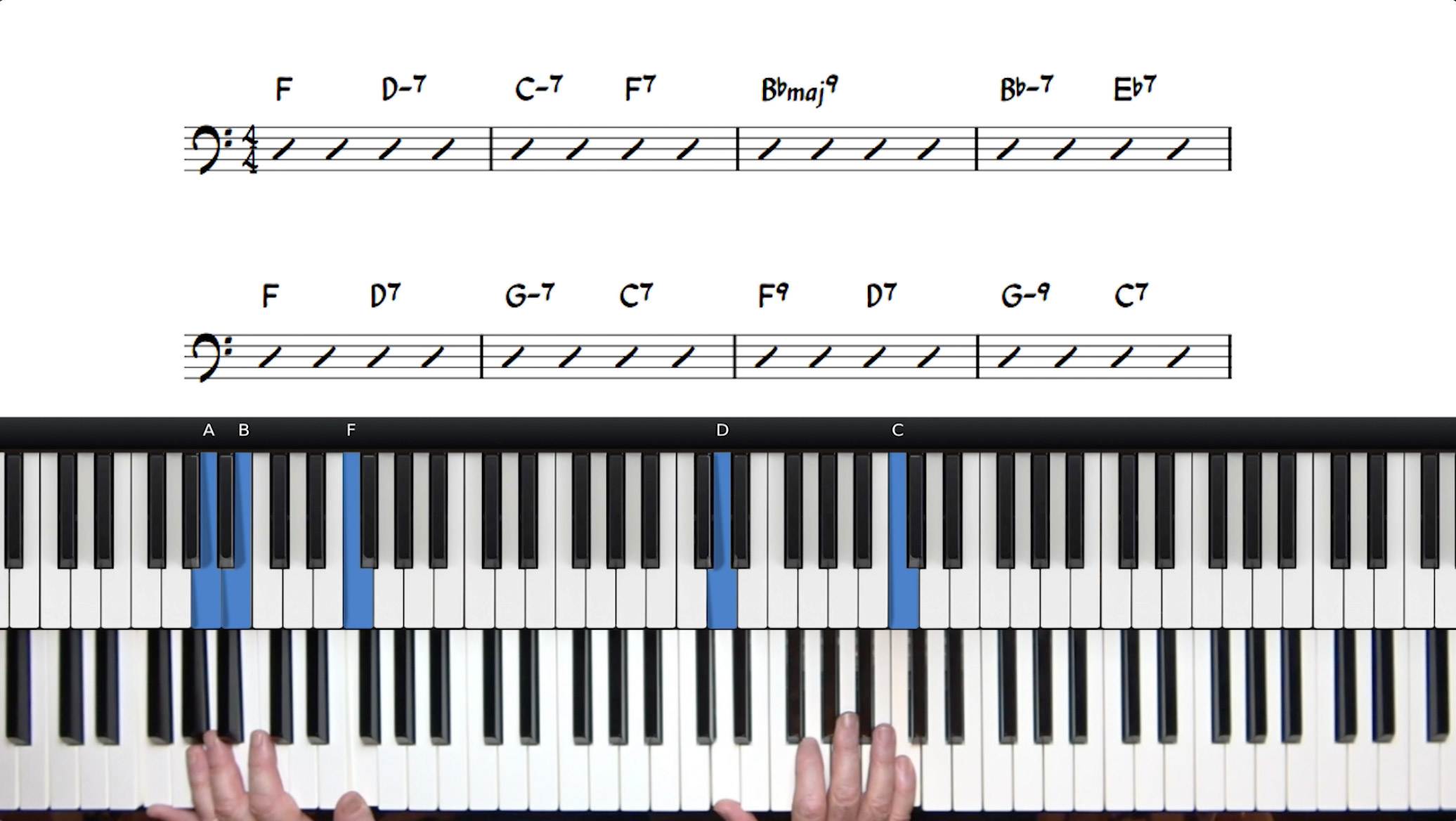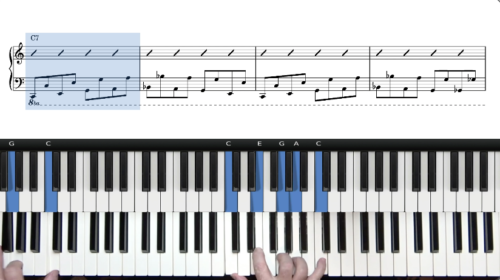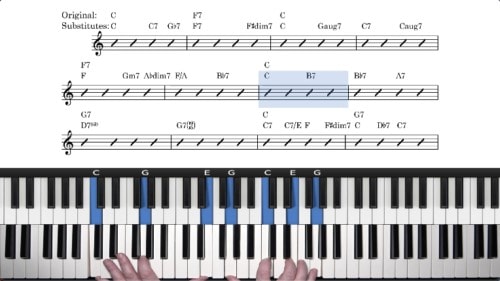Beefing Up The Bottom End
In the last few lessons we’ve been looking at how to add variations to the chord progression of the 8 bar blues. This is done largely with the right hand but it’s important to remember our left hand and to use it to add variation as well.
The left hand’s role is primarily stating the root of the chord and often this simple choice is the best. It works perfectly well and leaves the listener in no doubt about what’s going on. However, you don’t have to be restricted by this and it’s important to experiment with other options.
Varying Root Notes
One straightforward way of creating some variation is to choose a different note in the chord and play that note in the bass instead. For example, an F chord consists of the notes F, A and C, so instead of playing an F in the bass we could play A or C instead.
Hearing a different note in the bass creates a top-heavy chord which sounds less stable. It creates tension and sounds like it wants to resolve somewhere, which then rewards the listener when we do finally move to the next chord. We can also get a little more inventive and think melodically in the left hand to create more movement and variation.
Playing With A Singer
If we’re playing with a singer we want to keep things more simple because the focus has to be on the lyrics and melody. In this case we have to sculpt out some space so we don’t bombard the listener with information.
Lesson Downloads
-
Bass Note Tricks & Tips File Type: pdf
-
Melodic Bass Lines Example 1 File Type: pdf
-
Melodic Bass Lines Example 2 File Type: pdf
Practice Tips
-
All of the substitutions in this lesson can be used in other situations. They are easily applicable to the 12 bar blues but also can be applied to other tunes.
-
If you're looking for even more ideas for substitutions Jon plays with some different ideas throughout the lesson.
-
Take note of the other variations Jon plays at the end of this video, for example the right hand ostinato he plays as he accompanies himself singing.








